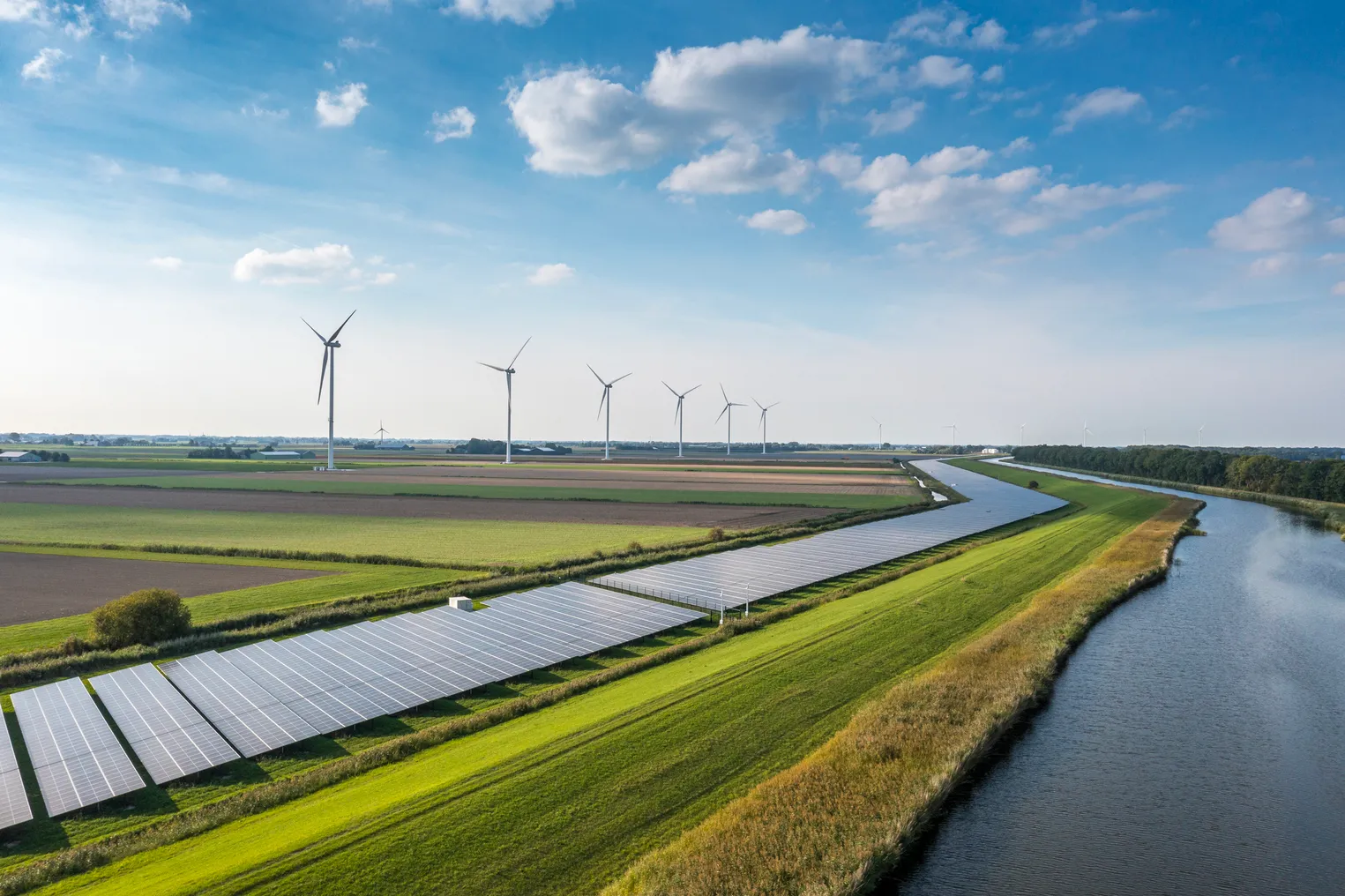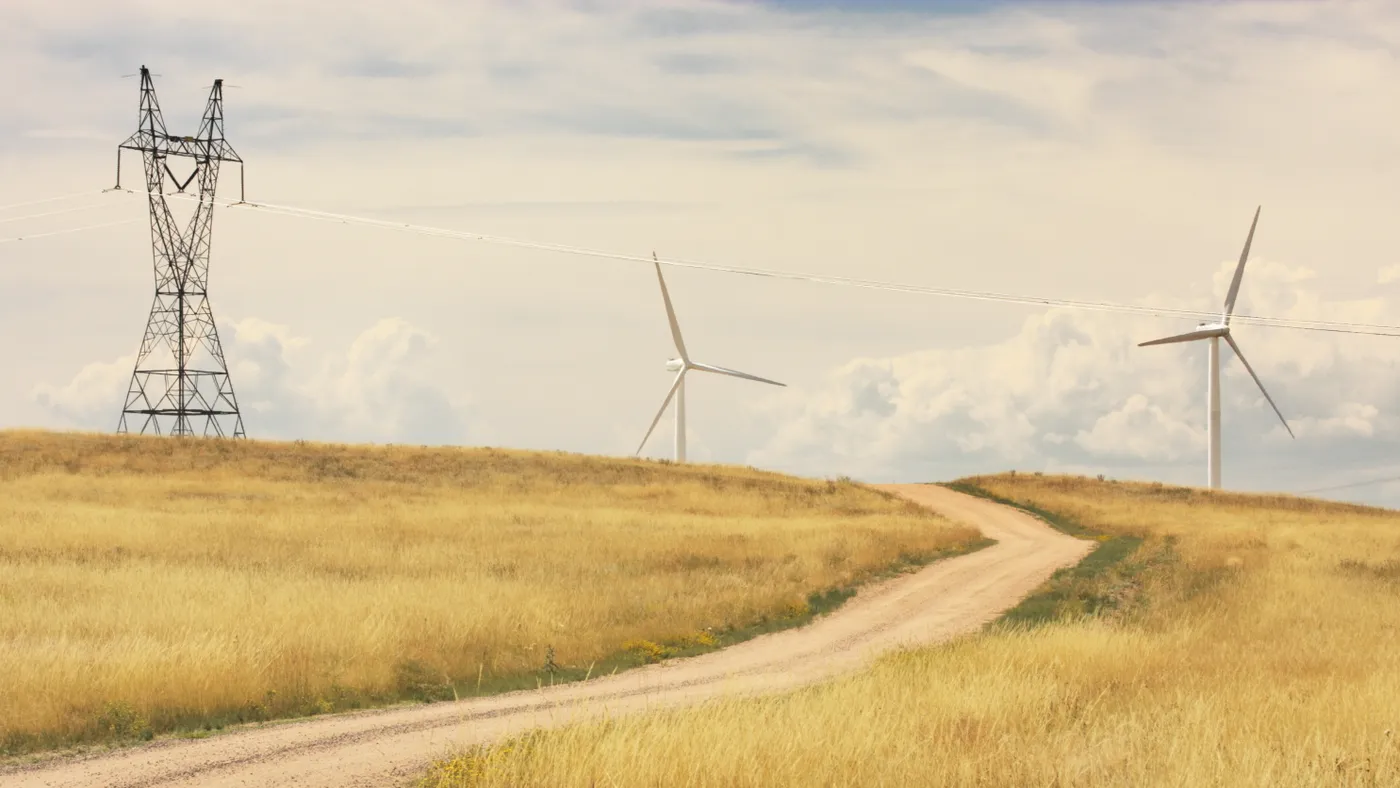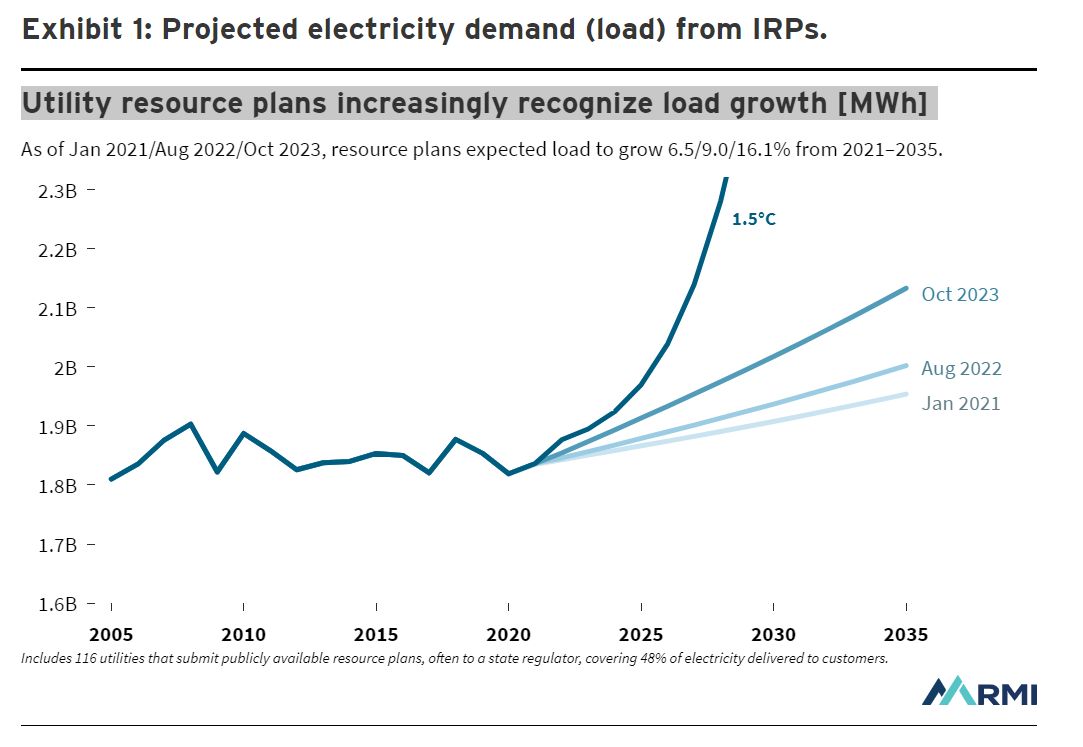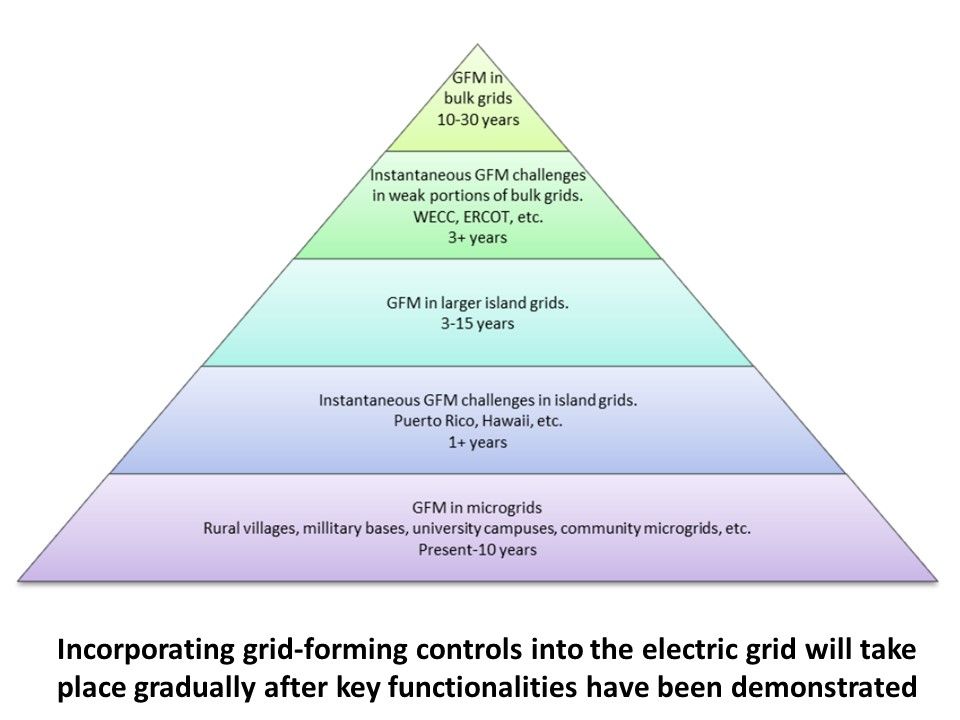
9 US power sector trends to watch in 2024
The U.S. clean energy transition is expected to accelerate this year, buoyed by recent policy and other actions, but transmission and financing are among its challenges. The following is a snapshot of some of the major developments and trends expected in nine critical areas of the energy transition this year.
FERC: Transmission planning tops agenda at shorthanded agency
The Federal Energy Regulatory Commission began the year with only three commissioners, leaving the agency at risk of losing its quorum if one of its members leaves unexpectedly.
Transmission planning and cost allocation reform is perhaps the top item on FERC’s agenda. The agency last year issued a final rule revamping its grid interconnection requirements in a step aimed at easing the massive backlog of generating and storage projects seeking to connect to the grid. Late last year, FERC Chairman Willie Phillips said he plans to advance as soon as possible a transmission planning rule that was proposed in 2022.
“There'll be a lot of pressure on the commission to get a [transmission planning] rule out pretty quickly in 2024,” said Neil Chatterjee, a former FERC chairman who is now a senior advisor with Hogan Lovells.
In the face of growing extreme weather, FERC will also likely continue to focus on grid reliability and resilience, a priority for Phillips, who formerly worked at the North American Electric Reliability Corp., which oversees grid reliability.
The agency will also likely tackle proposed gas pipelines and liquefied natural gas export projects, and may initiate efforts to reform capacity markets, according to observers. The agency is also facing pressure to respond to reliability concerns related to an Environmental Protection Agency proposal to limit greenhouse gas emissions from fossil-fueled power plants.
“FERC will be in the news a great deal this year,” Chatterjee said.
Transmission: Will 2024 mark the start of a buildout?
Several major transmission projects — TransWest Express, SunZia and Grain Belt Express, for example — made progress last year, indicating that 2024 may be the start of a significant buildout of the U.S. transmission system.
At the same time, including Grain Belt, there are 36 “ready-to-go” high-voltage transmission projects across the United States that could interconnect about 187 GW of renewable energy capacity, according to a September report by consulting firm Grid Strategies.
Some of those projects may benefit from the Department of Energy’s Grid Deployment Office — launched in 2022 — which has about $26 billion in available funding to improve the transmission system and bolster grid resilience and reliability. As part of that effort, in late October, DOE said it is entering into talks to spend up to $1.3 billion from a revolving loan fund for capacity buys on three transmission projects across six states. DOE expects the capacity purchases will facilitate financing for the projects.
In a move that could further support transmission development, DOE in December issued guidance on how it plans to designate National Interest Electric Transmission Corridors in areas where transmission capacity constraints or congestion is harming consumers.
DOE and FERC are also supporting the increased use of “grid-enhancing technologies” — such as dynamic line ratings and power flow controllers — to get more out of the existing transmission system. FERC’s new interconnection rule, for example, requires transmission providers to consider grid-enhancing technologies when assessing what upgrades may be needed to bring new generation online.
Renewable energy: Record investments and decarbonization goals will keep the momentum
Throughout 2024, the demand for renewable energy will continue to increase as states, the federal government and major corporations pursue emissions reductions in order to meet decarbonization goals.
The Biden administration has set a goal for the U.S. to achieve a 50% to 52% reduction in economy-wide greenhouse gas emissions from 2005 levels by 2030, while companies including Apple, Amazon and Microsoft say they are on track to powering 100% of their operations with renewable energy by 2025.
Eric Pollock, chief commercial officer of DSD Renewables, said that customer interest in solar continues to increase, though corporate customers looking to meet decarbonization goals are going through “evaluation phases” as they work out the logistics of doing so.
“They have a bit of compression ahead of them,” he said. “How do they actually meet those goals with — for example — seven years left [to a 2030 deadline]? Our conversations are becoming maybe more holistic.”
Demand for renewable energy is being bolstered by the tax incentives included in the Inflation Reduction Act, particularly when those incentives are coupled with domestic content adders, or bonus tax credits designed to spur the use of U.S.-made steel, iron and other products.
“I think when we look at the tandem push of federal investments flowing into clean energy, and the pull of decarbonization demand from public and private entities, they’ve never been stronger,” said Marlene Motyka, a principal at Deloitte and the firm’s U.S. renewable energy leader.
Motyka added that she expects the $220 billion of announced public and private investment in renewable generation attributed to the IRA and Infrastructure Investment and Jobs Act so far to “really help boost” solar and storage, “and maybe even tee off hydrogen.”
Energy storage: Continued growth, permitting challenges and a focus on longer durations
2023 was a bumper year for the energy storage sector: the U.S. installed a record 7,322 MWh of storage in Q3, bringing total deployments in the first three quarters to 13,518 MWh — already surpassing the 11,976 MWh deployed in all of 2022.
Experts expect that growth to continue in 2024, in part due to the continuing tailwinds from the Inflation Reduction Act. While installations are expected to increase in large markets like California and Texas, the market is also expected to grow in states like Arizona, Nevada, New York and Florida, which are increasingly turning to energy storage to ensure grid reliability, said John Hensley, vice president of research and analytics at the American Clean Power Association.
One policy development the industry will be keeping its eye on is ongoing clarity around guidance released by the Treasury Department on the standalone storage investment tax credit, according to Noah Roberts, ACP’s director of energy storage. The department released preliminary guidance in late November.
However, the storage industry will also face certain challenges, especially when it comes to permitting, said Vanessa Witte, senior research analyst, energy storage, with Wood Mackenzie.
“You have a lot of areas that have become a lot more difficult to permit — sometimes it has to do with land rights, sometimes it has to do with NIMBYism, but there’s just more issues than before that have to do with permitting…” she said.
Bogged down interconnection queues remain another source of anxiety for the industry, thanks to review processes that aren’t quick enough to match the need for new projects as well as the huge volumes of project applications that are entering the queues, according to Hensley.
Lithium-ion batteries, with durations of between one to four hours, are expected to continue as the technology of choice for 2024. However, the industry is slowly moving towards technologies that offer longer discharge durations.
The industry could see progress on some of these technologies, in the form of more pilot projects, more manufacturing facilities and maybe some projects that move from the pilot scale to commercial scale, Witte said.
Distributed energy resources: All eyes are on virtual power plants
Distributed energy resources — including rooftop solar, battery storage and electric vehicles — have been expanding on the U.S. grid in recent years, but looking to 2024, some experts see a clear focus on virtual power plants.
VPPs — essentially aggregations of distributed energy resources, which can operate on the grid like makeshift power plants — are at a potential inflection point, a September report from the U.S. Department of Energy concluded. The agency estimates that tripling VPP capacity to between 80 GW and 160 GW by 2030 could lead to power system savings of $10 billion a year.
“The notion of distributed resources of various kinds that can be dispatched, can be controlled — that I think is a broad theme going into 2024,” said Ryan Katofsky, senior fellow at Advanced Energy United.
“We’re going to see more emphasis on ways to grow that market, and to take more advantage of those resources as they come on to the grid,” he added.
There are a couple of different factors driving this interest in VPPs. There are simply more distributed resources being deployed, leading to more scrutiny into how they can be integrated into the operations of the grid, Katofsky said. There’s also a focus on the role VPPs can play in ensuring grid reliability, as well as addressing the general need for more flexibility on the demand side, he added.
Simultaneously, the move to electrify the transportation and buildings sectors is also leading to load growth after several years of relatively flat electricity sales.
“So there’s changing load shapes and increasing demand — and distributed resources that are controllable can help address those needs,” he said.
So far, a lot of the DERs deployed on the grid have been rooftop solar. But there’s been an increasing shift towards distributed storage that is expected to continue and intensify in 2024, especially as electricity system planners keep an eye on reliability needs.
On the regulatory front, 2024 will continue to see a lot of activity around the implementation of the Federal Energy Regulatory Commission’s Order 2222, a 2020 decision that instructed regional transmission organizations and independent system operators to remove barriers that could prevent aggregations of DERs from participating in wholesale power markets, according to Katofsky.
Nuclear: Facilitating the deployment of advanced reactors
In 2024, several significant trends are likely to emerge in the U.S. nuclear energy sector in project deployment, licensing and investment, according to Judi Greenwald, executive director of the Nuclear Innovation Alliance, including “more new reactors [progressing] through the Nuclear Regulatory Commission’s licensing process.”
TerraPower is expected to submit a construction permit application to the NRC for its Natrium fast reactor in Kemmerer, Wyoming, and X-energy is expected to submit a construction permit application for its Xe-100 gas-cooled reactor at a Dow Chemical facility in Seadrift, Texas. Regulatory reviews are also expected to advance for GE-Hitachi Nuclear Energy’s BWRX-300 SMR and other reactors.
In addition, in 2024, the NRC “may issue the proposed ‘Part 53’ rule for public comment, which is a major overhaul of its regulations intended to make it easier to license new reactors,” Union of Concerned Scientists Director of Nuclear Power Safety Edwin Lyman noted.
In 2024, the Union of Concerned Scientists expects to see more utilities pursue subsequent license renewals — from 60 to 80 years — for existing reactors “as well as power uprates that would enable them to obtain tax credits for new sources of ‘clean’ energy made available under the Inflation Reduction Act,” Lyman said.
Regarding state and federal policy priorities around nuclear, in 2024, “we hope to see continued momentum around legislative issues like expanding energy standards, repealing prohibitions and moratoriums on new nuclear energy, removing regulatory impediments, and modernizing market structures,” said John Kotek, senior vice president of policy development and public affairs at the Nuclear Energy Institute.
“In 2023, major financial institutions including Citibank began to publicly discuss new nuclear energy as a clean energy solution,” Greenwald said. “In 2024, we expect to see additional financial institutions focus on the potential opportunities related to new nuclear energy projects and for potential customers to work with these institutions to better understand how to structure projects to reduce financial risk,” she added.
Hydrogen: Tax credit uncertainty could stall projects in 2024
The hydrogen industry could be in for a relatively quiet 2024 — at least in terms of project announcements and construction.
With the final tax credit guidance still in the air, uncertainty around which projects will qualify for the incentive continues to delay decisions about which hydrogen projects get built, Frank Wolak, president and CEO of the Fuel Cell and Hydrogen Energy Association, said. Litigation could further drag out the debate around the guidance if leading hydrogen companies end up suing the Treasury Department for its decision, Wolak said.
Meanwhile, the guidance itself stands to delay projects if one of the requirements proposed in the draft takes effect, Wolak said. Treasury's proposal to require hydrogen producers to use new renewable energy or fuel resources would mean that hydrogen projects will need to wait three to four years for these new resources to come online. Between this rule and the delay of the guidance itself, Wolak said it was likely that many projects slated for 2024, 2025 or even 2026 may be postponed or canceled entirely.
The coming year is also expected to bring more detail around what the DOE's selected hydrogen hubs will ultimately look like, said Nick Connell, interim executive director of the Green Hydrogen Coalition. DOE is expected to finalize its negotiation with the hubs in the coming months. Yet some of the proposed hubs passed up for funding by the DOE have continued to move forward, Connell said. And several states — regardless of whether they will receive hub funding or not — are working on their own incentives for hydrogen producers. This could mean projects outside the selected hubs may be able to move faster than those eligible for federal funding, Connell said.
Cybersecurity: More collaboration, implementation of new initiatives
Hackers are expected to keep up a relentless stream of cyberattacks on the U.S. electric sector in 2024, meaning new approaches, collaboration and funding will be required to keep the grid safe, say experts.
From a policy perspective, the Biden administration took several steps to address cybersecurity threats in 2023, experts said. “We don’t anticipate any substantial shifts in policy or regulation federally,” Katherine Ledesma, head of public policy and government affairs at cybersecurity firm Dragos, said in an email.
“We will continue to see a push for regulatory harmonization as the administration has promised to use all policy and regulatory levers to raise the baseline level of cybersecurity for infrastructure across all sectors, including a focus on securing the software supply chain,” Ledesma said.
The electric sector will also see continued efforts to update North American Electric Reliability Corp. rules to allow the newest technologies to be utilized, said security consultant Tom Alrich.
Experts say cloud technologies can provide cost, security and reliability benefits to the grid but NERC’s Critical Infrastructure Protection standards do not allow them to be used for certain larger assets. In December, NERC’s standards committee began the process to modify the CIP standards to allow use of cloud computing by all systems.
“This problem has imposed a huge cost on NERC entities, as more and more software developers shift to the cloud as the primary or only delivery vehicle for their software,” Alrich said.
Utilities will also respond to the growing cyber threat by improving risk governance, said David Chaddock, managing director of cybersecurity for business and technology consulting firm West Monroe. One approach is through the use of protection level agreements — similar to service-level agreements — which utilities can utilize either internally or with third-part vendors to harmonize efforts and ensure security initiatives have needed resources.
Whether you call it data governance or cyber governance, “you’re going to hear a lot more about governance this year,” Chaddock said.
Electrification: Load growth, interconnection delays expected as more vehicles and buildings go electric
Electric vehicles and buildings added to utility loads in 2023, and experts anticipate the trend will continue in 2024 even as the grid may struggle with increased power demands.
Load growth caused by EV adoption first began showing up in the U.S. “in a very localized way,” with individual feeders being stressed by a few new vehicles in a neighborhood, said Mike Henchen, RMI principal for carbon-free buildings.
“We're starting to see the first ways that building electrification has an impact. And in a similar way, I think it’s very local,” Henchen said.
“We've seen a lot of interest in all-electric new construction, especially driven by building codes and local policies around the country,” Henchen said. But there can be “friction” because the utility “may or may not have the capacity readily available to interconnect all electric neighborhoods.”
“We started to see the first inklings of that in 2023 and probably will see more of it in 2024,” he said.
Efficiency can play a major role in limiting the electricity demand impacts of buildings, and in 2023, the U.S. made “significant strides” on appliance efficiency and industrial decarbonization, Steve Nadel, executive director of the American Council for an Energy-Efficient Economy, wrote in a Jan. 2 blog post.
ACEEE officials said they are also watching California, where the state’s 2025 building code is expected to be published this year and could push more homes to go electric rather than use natural gas.
Electric transportation is also adding to demand, as more consumers choose an EV. There were 1.2 million EVs sold in the U.S. last year, according to estimates by Cox Automotive.
EVs made up 7.6% of new vehicle sales in 2023, up from 5.9% in 2022, Cox said. And in the fourth quarter, EVs were 8.1% of new sales. Though growth has slowed, the firm’s expectations are for EV sales to surpass 10% of new sales in 2024.
The rollout of electric vehicle chargers through the federal National Electric Vehicle Infrastructure program will also continue, said Ryan McKinnon, a spokesperson for the Charge Ahead Partnership, which represents businesses interested in providing EV charging. States, however, will be putting a greater focus on where those chargers are installed, and there is a need for new EV-specific charging rates, he said.
“Many NEVI-funding recipients will struggle to turn a profit on EV charging because of demand charges, so expect to see increased calls for EV-charging-specific rates,” he said.
The Charge Ahead Partnership supports laws that restrict utility ownership of charging stations, and McKinnon said the group expects success on the issue this year.
Texas, Georgia and Oklahoma have laws limiting or prohibiting utility ownership of EV charging stations. Arizona, Florida, Nebraska, Ohio and South Carolina “are all likely to take up the issue of utilities owning EV charging again, after legislation stalled in 2023,” McKinnon said.









